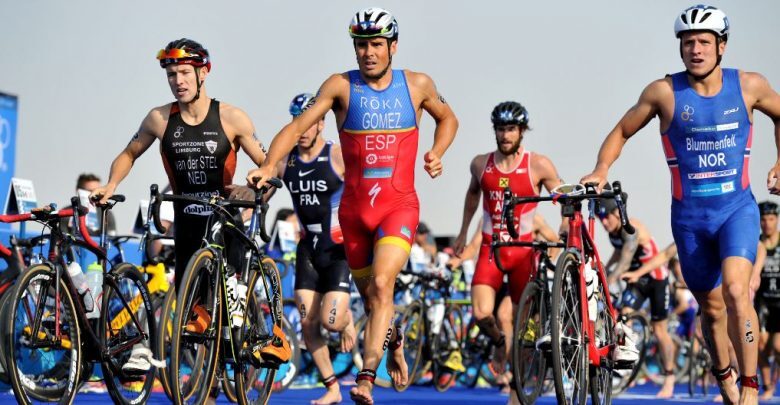The most common 10 errors in transitions
It is a key point where you can win or lose a race.

Transitions will be considered the fourth triathlon discipline and it is a key point where you can win or lose a race.
This is why we have compiled the 10 most common mistakes which usually occur in the transition zone during a competition.
With these tips you can make faster transitions that will allow you not to lose those valuable seconds.
1st Put too many things in the transition zone
Being prepared does not have to involve putting three cycling shoes and the kitchen faucet in the transition area, that will only cause you trouble.
Normally, there is an elimited spacing between bicycles, so it is advisable to review the weather, take into account the route and thus be able to put only what is necessary in transition.
2nd Don't know the transition path
Imagine the scene. You have done a good swim, you can take off the wetsuit with ease, the problem to put on the helmet is minimal and you take your bike to realize that You have no idea where to go.
This scene is too common in racing and has a very simple solution before boot. Previously, take time walking the route of the T1, from the water to the point where your bike is located.
Then for T2, enter with the bicycle to go on the run on foot, if after having done it once you are still not sure, repeat it.
3rd Do not practice the transitions before the race
This may not raise the level of endorphins such as swimming, pedaling or running, but transitions cannot be ignored and the best thing is that you can practice them even in front of the television.
Practice putting on and taking off your helmet, the same with the wetsuit. Also adjust the laces or rubber so that they slide easily. If you don't look motivated you can always do careers with friends!
4th Place the messy kit
This is a sin committed both by beginners and by veteran triathletes. It's as simple as Place everything in the order you will use it.
That means that if you put everything on the ground, the helmet goes over the back carrier that goes over the cycling shoes if you don't leave them on the pedal, this for the T1.
With respect to T2, leave your running shoes tidy next to each other.
5th Throw the neoprene carelessly
Although they will most likely not penalize you as they do in ITU careers, dEjecting your messy and out of place neoprene causes a multitude of problems.
Let's start with what will ruin your T2 when you leave the bike again and stumble. In addition, it will not only ruin your transition, it will most likely affect the competitor next to you.
Finally, an arbitrator can notice the disorder and remove the entire transition kit.
6º Being unable to find your bike
Although it has already been mentioned in the second point, this specifically needs to be emphasized. When you get out of the water, it is normal to feel dizzy and confused.
So when you run on the T1 it may seem unknown terrain and panic can spread if you don't find the bike immediately.
Walk the transition before the start of the race, you should put a solution to this problem since it is not officially allowed to mark your transition zone (with a helium balloon, for example) worth making a mental note of something specific that characterizes the area to help you find the bike quickly.
7th unnecessary penalties
Most of us compete for fun, but it's still important to follow the rules, since their goal is not to satisfy the judges, but the safety of the participants.
Always wear the helmet fastened and well adjusted while in contact with the bike is the golden rule.
This entails buckling it before taking out your bike and not unbuttoning it until the bike is again well placed on it. It is also advisable to take into account the lines of mount and disassemble, get off or get on the wrong track can cause a penalty.
8th Try to jump on the bike without having practiced it
You will see many triathletes who start the bike segment with the sneakers hooked to the pedals and there is a good reason for this: practice.
If done in the right way, is the best option to start the second part of a triathlon but must have been practiced before doing it in a race, you could risk losing a lot of time or worse ... injuring yourself.
9º Leave the bags pulled in the transition
This is a principle of cleaning at home. When you are organizing everything before the race, It is a good idea to carry the entire kit in a plastic bag, but once placed, It is best to throw it away.
10th Leave everything too late
Finally, don't leave everything for the last moment. If you come from a single sport, you would be surprised to know the logistic demand of triathlon.
Doing things in a hurry will only increase the chances of making a mistake and / or forgetting something.
It is much better to be waiting quietly until the start, than to run to get there before the transition closes.
Translation: Almudena Abad
Photos: Janos Smith ITU
There are no previous results.




























